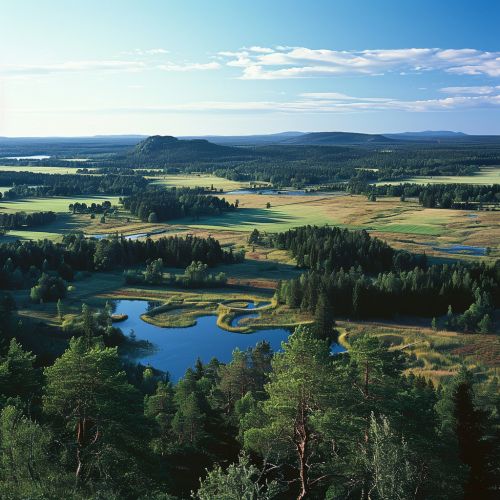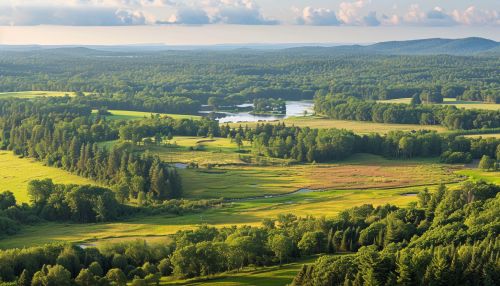Landscape ecology
Overview
Landscape ecology is a sub-discipline of ecology that focuses on the spatial patterns and processes in landscapes, and how they interact with and influence ecological phenomena. It is a highly interdisciplinary field that integrates elements from various other fields such as geography, biology, geology, and computer science. Landscape ecology has a strong emphasis on the relationship between pattern, process and scale, and it often involves the study of large areas.


History
The origins of landscape ecology can be traced back to the work of early European geographers, particularly in Germany and the Netherlands, who were interested in the study of land use and the spatial patterns it created. The term "landscape ecology" itself was first coined by the German geographer Carl Troll in 1939. However, it wasn't until the late 20th century that landscape ecology emerged as a distinct discipline within the broader field of ecology.
Concepts and Principles
Landscape ecology is underpinned by several key concepts and principles. These include:
Landscape Elements
A landscape is composed of a mosaic of patches, which are spatially heterogeneous areas that differ in some way from their surroundings. These patches can vary in size, shape, and composition, and can include elements such as forests, fields, lakes, and cities.
Landscape Processes
Landscape processes refer to the ecological dynamics that occur within and between patches. These can include processes such as disturbance, succession, and nutrient cycling.
Scale and Hierarchy
Scale is a fundamental concept in landscape ecology, as the patterns and processes observed in a landscape can vary greatly depending on the spatial and temporal scale at which they are studied. The concept of hierarchy refers to the idea that landscapes can be studied at various levels of organization, from individual patches to entire landscapes.
Methods
Landscape ecologists employ a wide range of methods to study landscapes, including field surveys, remote sensing, and computer modeling. These methods allow researchers to collect data on the physical and biological characteristics of landscapes, as well as the processes that occur within them.
Field Surveys
Field surveys involve the direct observation and measurement of landscape elements and processes. This can include methods such as vegetation sampling, wildlife tracking, and soil analysis.
Remote Sensing
Remote sensing involves the use of satellite or aerial imagery to study landscapes. This allows for the study of large areas and can provide information on landscape patterns and changes over time.
Computer Modeling
Computer modeling is a powerful tool in landscape ecology, allowing researchers to simulate landscape processes and predict future changes. Models can be based on a variety of data, including field survey data, remote sensing data, and geographic information system (GIS) data.
Applications
Landscape ecology has a wide range of applications, from conservation biology and wildlife management to urban planning and public health. For example, landscape ecology can be used to identify and protect biodiversity hotspots, manage the spread of invasive species, and plan sustainable urban developments.
